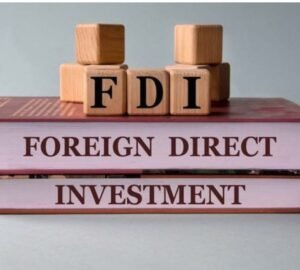India, with its fastest growing economy and various consumer base, providing a promise landscape for business to thrive.
Many non – listed Indian brands have harnessed on this environment, attaining remarkable and impacting trends across sectors.

In the past Year the Indian Brand Market has witnessed a remarkable upsurge in the success of niche brands. These brands have not only flourished domestically but also have but have also made important inroads into international markets.
Let’s dive into stories behind their success and impact they are having on market:-
boAt: Cruising the waves of audio innovations:-
Aman Gupta and Sameer Mehta- founded boAT in 2016.
boAt has become a domestic name in the audio gear market.
The Idea has Enthralled Indian consumer with its stylish and inexpensive Headphone, Earphone and Speaker by providing high-quality products at competitive price.
In 2019 there total Revenue was 240.75 cr compared to 2023 it was 3284.76 cr.
Mamaearth: Toxin – free Skincare:-
Founded by Ghazal Alagh and Varun Alagh in 2016, Mamaearth Introduce itself with its natural and non-toxic products.
Their promise to sustainability and safety has related with consumer, pointing to impressive market infiltration.
Mamaearth, showcased a 28.7% year- on – year growth to near Rs 2000 crore revenue threshold in 2024.
Lenskart: Leading Eyewear Industry:-
Lenskart, a Peyush Bansal, Amit Chaudhary and Sumeet Kapahi idea, founded in 2010, has enlarged to become a leader in the eye lenses industry.
Lenskart has completely changed the way Indians buy glasses. The company has maintained its leadership position in the industry thanks to its creative business strategy, which blends offline and online retail.
Lenskart estimated to have closed FY24 with a revenue of 5500 crore, up 45.19% from 3,788 crore at the end of FY23.
BYJU’S: Edutech Company in India:
Established by BYJUS Raveendran in 2011, initiated with competitive exams.
It has outgrown into biggest Edtech company in India.
Generated revenue around 6,500 cr in 2023 compared to 2022 which was 5298 cr.
Unacademy: a wide variety of courses and knowledgeable instructors
Online platform providing wide range of courses and educational content for student who are preparing for various competitive exam.
In FY23 their Revenue was 1044 crore.
UpGrad: cutting-edge online courses and curriculum that is pertinent to industry
-Online Higher Education platform offers various courses and programs in collaboration with universities and Industry expert.
In FY23 their Revenue was 1,194 crore.
This indicates unequivocally that India’s niche brands are flourishing and will soon leave their mark on the international scene.
Let’s see a case study about Haldiram and how investment on Indian brand would change its look in near future
Case Study: Is Haldiram’s going to Foreign Hands?
A fierce struggle rages between the titans of global finance for control over Indian Brand -Haldiram Snacks Ltd. A group that includes the Abu Dhabi Investment Authority (ADIA), GIC of Singapore, and Blackstone, the largest private equity fund in the world, has made a non-binding offer to buy a majority share in Haldiram Snacks Food Pvt Ltd.
A non-binding offer from Bain and Temasek valued Haldiram at $8.85 billion, highlighting the company’s dominant position in the Indian market for convenience foods and snacks.
Blackstone, in partnership with ADIA and GIC, seeks to acquire up to 76% of Haldiram. Two of Bain’s limited partners are ADIA and GIC, demonstrating the complex network of relationships present in the global investment scene.
Over the past month, Bain has been strategically aligning with ADIA and GIC, illuminating the intricate alliances that are influencing global investments.
This would be the biggest private equity buyout in India history if the deal closes.
Now, let’s dive little into how and why luxury brand are attracted towards Indian market.
The booming luxury market in India
The luxury market in India is expanding significantly:
| Year of Investment | Investment |
| 2021 | $7.5 Billion |
| 2022 | $8.5 Billion |
| 2023 | $85 Billion |
Elements Affecting Indian Investments in Luxury Brands:
Exposure to World Developments: More people having access to the internet means they can research and buy international brands.
Growing Affluent Demographic: In the near future there will be a 69% increase in millionaires in India. There is growing population of ultra-high-net-worth individuals, introduced as those with a net worth of at least $30 million.
Distinguished Indian niche Companies exerting significant influence in the market.
These homegrown Indian brands are all leveraging innovation and technology to disrupt traditional markets and achieve significant growth.
Let’s see some of these brands and their Revenue –
Naykaa– A pioneering Indian beauty retailer Ecommerce site with its wide range of cosmetic product. With its rapid and growth and expansion, naykaa set a bar in the beauty and wellness.Their FY24 Revenue was 6,386 core, with Net Profit of 69 core.
Rachit Ball– His journey from scenic valley Kashmir to the Global fashion capital is a witness of his talent, Vision and perseverance. Total Revenue is around $5 Million
Manish Malhotra- As a couturier, costume designer, businessman, and revivalist, Manish Malhotra has redefined fashion over the course of his illustrious 30-year career. Manish started out as a model, but his love of fashion and movies quickly drew him into the costume design industry.
With his revenue of around $28 million he is quite famous a fashion designer globally.
Rina Dhaka- Renowned designer Rina Dhaka caters to women who are cognizant. The BBC refers to her as the “Gautier of east” because she is a fashion pioneer whose signature style combines traditional Indian garments with contemporary fabrics from the 20th century, such as jersey and lycra.
AND – Ochre & Black Private Limited, a reputable company in the fashion industry today, has brands like AND, Global Desi, AND Girl, Global Desi Girl, and itse. All of the brands under Ochre & Black Private Limited have distinct personalities, ranging from AND & AND Girl, which houses sophisticated western wear, to Global Desi and Global Desi Girl, which add vibrant touches to ethnic looks. The fashion house introduced itse, a new brand in 2021, to appeal to a younger demographic seeking affordable ethnic fashion. Their range revenue from 100 – 500 crore INR.
SUGAR – SUGAR cosmetic is a successful beauty brand founded in 2015 by Vineeta Singh and Kaushik Mukherjee.
Target to a diverse audience with various skin tones and preferences.
The startup’s operating revenue for FY23 was INR 420.2 Cr, up 89% from the INR 221.8 Cr it brought in the year before.
J.J Valaya – As a student at India’s first and only fashion school, NIFT, JJ Valaya entered the country’s emerging fashion industry in 1989. He and his brother, TJ Singh, an ex-army man, started their own record label, Singh Records, in 1992.
Netmed – India’s leading online pharmacutical brands site. Provide wide range of pharma brand and healthcare service making easy for people to access medicines. FY23 Revenue 14,642.82 crore, Net profit 1,119.92 crore
In summary
Indian brands shows vigorous global reach and strength to compete internationally.
These non-listed companies are not only reshaping their respective industries through constant innovation and growth, but they are also having a significant impact on India’s dynamic economic landscape. Their achievements testify to the potential and opportunities present in the Indian market.
The quick rise of companies like boAt, Mamaearth, Lenskart, and BYJU’S ladle out as an example of how strategic innovation combined with a keen grasp of customer needs can result in extraordinary success, modern technology, and changing consumer preferences to establish strong market positions both home and abroad. Taking advantage of India’s rich culture legacy these company have made their space in industry vertices
What do you think these Indian brands’ future paths will be?
Do you think it’s a wise idea to invest in them, or do you think a foreign investment trend could change their direction?




